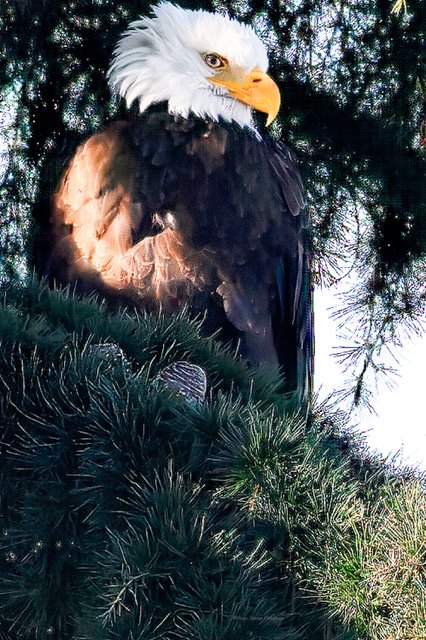Hold your breath, be very still, gently press the shutter and then practice, practice, practice. You will end up seeing what works and what doesn't as you can see it in your review shots on the rear screen at 100%. You will probably need to check shots on your computer for critical sharpness results and this is why I always rattle off a number of shots with high fps. I have managed to get sharp shots handheld with the 800 pf at 1/40sec completely unsupported. It helps to have a very stationary subject as well!
Z9 + 800 pf, 1/40s f/6.3 at 800.0mm iso720
Here is the crop I wanted:
With VR/IBIS I usually will go for a shutter speed of about 2-3 stops under 1/focal length but may venture lower if I know I nailed a few at that speed. I only do this if I want to keep ISO low or where I am sure the subject will be still for a second or so. If I am shooting a moving bird, then I go above 1/focal length. If I am shooting BIF than it may be 1/3200 or more.
After a while, you can get the feel for what you can get away with on a particular lens and what the subject is doing. These are probably cropped a little as well. All free standing no support.
Z9 + 800 pf,
1/320s f/6.3 at 800.0mm iso800
Z8 + 800 pf,
1/160s f/6.3 at 800.0mm iso450
Z8 + 800 pf,
1/125s f/6.3 at 800.0mm iso450








